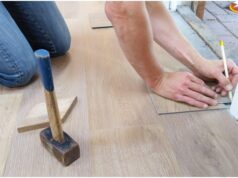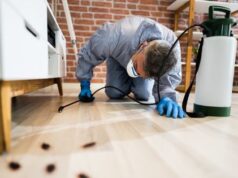Plumbing, just like any other hands-on job, is a delicate one that calls for complete care and caution, especially if you’re not an expert. After all, no homeowner would want to escalate things from bad to worse. There are quite a few things that are relatively easy to do by yourself as long as you have the knowledge and skills, but trying to fix things without any knowledge can lead to major problems.


If you’re having some plumbing problems, DIY’s will undoubtedly cross your mind. Other than the joy and satisfaction that comes with successful DIY’s, homeowners get to save quite a substantial amount of money that they could have used to source for professional plumbing solutions. As plumbing is as delicate as they come, one must, therefore, proceed with utter caution in the event they indulge in some plumbing DIYs.
Where are my water mains?
If you’re looking forward to fixing a plumbing issue, probably a major one, the very first thing you ought to do is know where to turn on and off your water main. In general, it should be outside of the house most likely near the street so that it can run water to all of the houses on your street. It could also be located in your basement if you have one, or right next to the water heater. You may need to check a few places, if it’s not inside the house it will be close to the property line outside.
Conventionally, water and sewer lines use different routes to and out of a building. However, that is not always the case. Which means you should know where the sewer line goes as well. Getting to know where your sewer line is will, without a doubt, help you avert some serious complications and let you proceed with a little more caution on areas where sewer and water lines cross.
Avoid puncturing both water and sewer lines as much as possible
It’s a Sunday afternoon, and you’ve finally made up your mind to proceed with your DIY plumbing. As always, remember to be extra careful not to puncture either water and sewer lines. Puncturing either sewer or water lines could lead to leakages and mixing of water and waste which may be a health hazard. As such, it is not enough that you be extra cautious. Avoid using sharp objects while working around such areas. If unsure you could contact a plumbing service provider to guide you through the process or simply to do it themselves. There is no shame in calling for help. Professionals would rather fix the initial problem than have to fix something more severe that was caused by someone, without any knowledge, trying to fix it on their own.
Loosening the water pipes
In rare situations, you will find metallic water pipes around your house. But in the event that happens to be the case, always make sure that you have the necessary equipment such as an adjustable pipe wrench. If you’re dealing with plastic pipes, always use heat to loosen fittings. This will make it easier for you to loosen the pipes and will make it less likely that something cracks. While at it, always keep in mind to never under or over-tighten fittings. Under tightening pipes can lead to leaks and over-tightening can warp the rubber fittings inside the pipes over time. Be careful of how much you tighten since you do not want this to happen.
Always prioritize on personal safety
More often than not, people tend to be a little lax when it comes to personal safety in virtually anything. People believe that in the safety of their own home extra caution is unnecessary. That should not be the case when it comes to plumbing. In the event, you’re about to undertake a plumbing DIY around your house, always see to it that you have the necessary safety equipment on. Get yourself the appropriate footwear, gloves, protective eyewear, and breathing masks where needed. Wear long pants and a shirt that will protect you from debris. Nothing is more important than your safety, if you feel like you’re in over your head then you should probably leave it to the professionals.
Always have your professional plumber number on the dial
Let’s face it; mistakes happen during DIY plumbing. Mistakes that even we can’t rectify. What next? One would ask. In the event, you happen to probably puncture either a sewer or water line or clog a pipe while carrying on with your DIY plumbing, then contact your local plumbing agent for assistance. We do not want to move from bad to worse. If it is a situation that you certainly cannot handle, leave it at that and have your professional local plumbing services have a look at it.
For DIY lovers, seeing your DIY project come to a successful end is, without a doubt, the most amazing moment. I mean, that right there is the ‘work of your hands’! Regardless of the DIY project, caution must be prioritized at all times. With the above DIY plumbing tips, your DIY experience is bound to be better!
Author Bio:
Samantha Higgins is a professional writer with a passion for research, observation, and innovation. She is nurturing a growing family of twin boys in Portland, Oregon with her husband. She loves kayaking and reading creative non-fiction.









